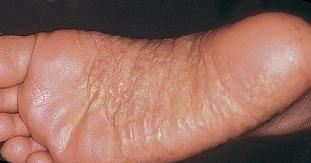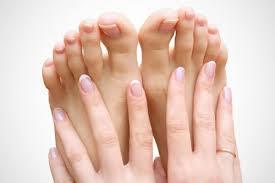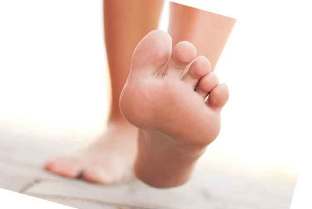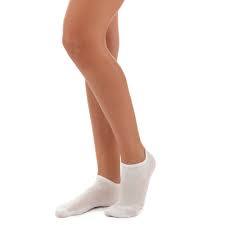Palmar-plantar psoriasis affects the palms, soles of the disease, the abnormal autoimmune disease.

Psoriasis on the palms, soles, and the naturalization process of the scalp is one of the most common form of the disease. This is approximately 14% of cases a pathological condition of the skin.
The reasons for the development of the disease
Although Palmar-plantar psoriasis is not typical to the reference to age in the period of 15-35 years, the highest frequency of developing the disease. There is a link to the ethnicity. This meant that the individuals of the Caucasian nationality over the age of 50 years significantly increased the risk for developing the disease.
The exact cause of the pathological conditions is not fully understood, but it is still believed that the disease autoimmune process. In normal operation, the immunity a person gets protection from various foreign agents, viruses, allergens, protozoa, other micro-organisms.
When psoriasis occurs a malfunction in the body, then the immune system starts to produce aggressive substances against its own cells, tissues. The excessive number of T-lymphocytes (key cells of the immune system) and macrophages leads to the development of the inflammatory response to excessive proliferation of the skin cells, which is the observation of typical symptoms and the appearance of hyperkeratosis.
Note! Hyperkeratosis excessive thickening of the epidermis — the outer layer of the skin.
Some studies show that a minor role in the factor of heredity. For example, approximately 10% of the population inherits the genes associated with psoriasis and only 3% develop the disease. Such statistics show that the presence of other, more fundamental reasons for the disease.
Additional risk factors include the following:
- The stress, emotional lability (sensitivity).
- Smoking, drugs.
- Background disease in which the immune system.
- Infections, frequent injuries, cuts, palms, soles.
The 2006 study, it was found that the relationship with the dermatological diseases, cardiovascular diseases, and other conditions: high blood pressure, diabetes, and hyperlipidemia.
The results of the experiments, that the end is not clear. The full understanding of the processes, the study of the subject continues, but more research is needed.
Triggers the disease (factors affecting pathology, but not causing it directly) can be the following:
- Sunburn;
- Insect bites;
- The effect of allergens.
- Common bacterial infections, such as pneumonia or a sore throat;
- Viral diseases, including HIV infection;
- Inflammatory condition of varying severity: bronchitis, nasopharyngitis;
- Severe alcohol poisoning;
- Obesity.
Diagnosis of Palmar-plantar psoriasis

Despite the rapid development of modern medicine, even the establishment of the psoriasis on the palms of his hands, there is the possibility of visual inspection of the skin by the doctor without special equipment. The physical examination on the basis of "arthritis triad", whose manifestations can be observed light scraping of the scale, the affected body part.
The doctor pays attention to the history of the disease as a constantly medications may trigger conditions:
- Indomethacin and other nonsteroidal anti-inflammatory drugs (Nsaids);
- Lithium and anti-malarial drugs;
- Sudden withdrawal of corticosteroids;
- Account of penicillin, hydroxychloroquine.
In difficult cases, a comprehensive examination, which includes laboratory blood tests, ultrasound scanning, as well as the exclusion of fungal infection using mycological diagnosis. If the testimony be doubtful, biopsy of the lesions on the skin.
The symptoms first signs of Palmar-plantar psoriasis
The main types of the disease five versions. Thus, the 90% observation visual characteristic clinical picture.
It looks like Palmar-plantar psoriasis? The patient's palms, soles, defined psoriatic plaques, red scaly patches of thickened skin prone to peeling. The centers a person to feel itching, fever, pain, variable in intensity; in some cases, the skin cracked, bleeding.
You can affect the formation of the nails:
- The nail plate may appear errors, hole;
- The thickened nails, discolored;
- This changes the shape.
Palmar-plantar disease occurs as part of the overall process, but is limited only to the skin of the palms, feet. Psoriasis the soles of the feet makes it difficult to walk wearing shoes. Damage to the hands not only prevent the execution of any work, but also impose a negative impact on relationships. Ordinary situation, like a helping hand, it may be awkward, that awkward, social anxiety in people, while the development of social phobia.
The distinctive feature of this form of the disease, the presence of the kind of process which can be called to the following conditions:
- Palmar-plantar pustular psoriasis Barber;
- Purulent psoriasis;
- Pustular dermatitis.
Listed disease of the skin caused by the formation of clusters (clusters), the various blisters in the region of the plaques. Usually such rashes are very similar to the normal pimples. It should be noted that this kind of disease remains simple methods to treat, and often integrated approach to the therapy.
Please note! Pustular psoriasis of the palms, soles should be treated with anti bacterial agents, when you connect to a bacterial infection.
Stage Palmar-plantar psoriasis

Like all forms of the pathological process, Palmar-plantar localization characterized by three clinical stages:
- In the initial stage. The appearance of lesions of the hand and foot. The plaques have a characteristic red hue, it might be purulent whitish inclusions; the patient's problem is intense itching. The lesions coalesce into large pockets. Their number depends on the individual characteristics of the disease.
- The stage of stabilization. The condition is not development of new pathological elements are not formed, but the old is still intact. Itching gradually subsides, and the color of the plaque less bright.
- In the final stage. Accompanied by regression of the elements, itching missing. The treatment support cannot be ruled out completely; offered recommendations to the remission to maintain and prevent relapse.
In some cases, the disease according to the classification of the elements of the rash:
- Normal form — a typical manifestation of the skin;
- Horny in shape accompanied by hyperkeratosis and the typical red spots a little, or not exist;
- Form Of Barbera.
Treatments
Palmar — plantar psoriasis is a chronic disease, which may appear repeatedly, regardless of the treatment. However, there are therapies to achieve reduction in terms of acute and prolong the period of remission.
The main treatment is to try to prevent the rapid growth of the cellular elements, which are the development of plaques, conducted anti-inflammatory therapy. An alternative method to ensure the immediate removal of the balance sheet.
Because the skin on the palms, soles thickened, even in healthy people, treatment of this localization often involves techniques in combination, as well as more aggressive effects of the lesions.
First psoriasis of the palms, soles ordered local treatment in the form of gels, ointments, creams:
- The Vitamin D analogues;
- Ointments based on corticosteroids;
- Retinoids;
- Anthralin;
- Special resin;
- Salicylic acid;
- Moisturizer to reduce swelling and relieve the inflammation.
Common side effects are irritation, drying, thinning of the skin. Extra can be light therapy:
- Natural ultraviolet radiation from the sun;
- Artificial ultraviolet radiation through a special device;
- Excimer laser;
- Photochemotherapy.
It is important to know!It's very important the smooth transition to a natural light therapy. It is recommended to start with 5-10 minutes of direct sunlight. After that, gradually increase exposure time to 30 seconds per day.
Drugs for the treatment of Palmar-plantar psoriasis
Palmar-plantar psoriasis includes treatment with oral medications more severe forms of the disease:
- Methotrexate;
- Retinoids;
- Cyclosporine;
- Biological medicinal products, which reduce the activity of the immune system;
- Thioguaninnal;
- Hydroxyurea.
The most common side effects of medicines called problems with the gastro-intestinal tract.
Prevention of disease
Severe course of disease is to a certain extent, can affect the development of serious conditions, which threaten the health, life, of patients: 58% increase in the risk of myocardial infarction, or 43%, of the stroke. The major immediate complications of psoriasis, on the palms, soles, psoriatic arthritis, and nail dystrophy.
The national health research centre identified a number of diseases, which depends on the skin disease:
- Related autoimmune conditions: crohn's disease, celiac disease, sarcoidosis, and others;
- Ocular diseases: cataract, glaucoma, and infectious processes;
- High blood pressure;
- Parkinson's Disease;
- Diabetes;
- Diseases of the liver, the kidneys;
- Osteoporosis;
- Depression.
Note.Timely treatment of compliance with the necessary guidelines and possible relapse of psoriasis can be reduced, skin manifestations, to minimize.
Recommended preventive measures:

- The daily bath natural oils, salts and mild soap, which contain no artificial flavourings, colours;
- Use a moisturizer, the skin (in severe cases — twice a day), especially after receiving the water treatment. That's not use difficult towels. Simply apply to the skin with a soft, dry cloth, then the cream;
- Get enough sunlight. Consult your doctor to choose the "Golden mean". Too weak to sunlight does not bring noticeable effect is too intense will increase your skin cancer risk;
- Avoid triggers such as Smoking, alcohol consumption, stress, infection;
- Use the aloe juice. You should perform the cream on the damaged skin several times a day. There are official studies that prove the effectiveness of this plant in the fight inflammation of the skin;
- At least three grams of omega-3 fatty acids / day. The diet includes fish, walnuts, flax seed oil or capsules of fish oil. Fatty acids help to reduce inflammation in the body;
- Helping you to get a special supplements on the basis of barberry tea-tree oil or Dead sea salt.























